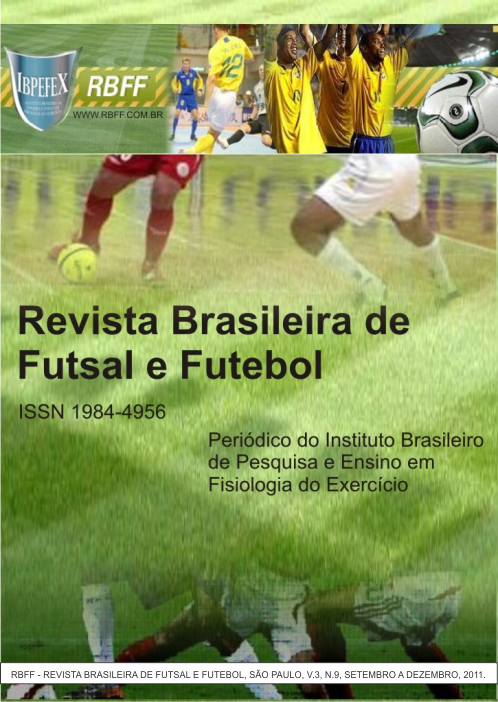The Statistical Relationship of Performance of Certain Passes in the Training Games and Official Games in the Category Sub-14 of City of Mairiporã
Abstract
Objective: This study aims to statistically relate the use of certain passes during practice and games official soccer matches in the sub category –14 of the city of Mairiporã. Materials and Methods: The method used to conduct this research was observational analytic study, a systematic observation being carried out selectively at the actual moment of the pass and supplemented the records with recorded images. Results: The result of observation of certain passes in three games and three games training officers had different values, as the following: training games in 1179, equivalent to an average of 78,6 and 743 official games in the same medium at 49,5. Discussion: Analyzing the training games and competition matches under-14 in the city of Mairiporã, we can see a big difference between these two situations, ie in official matches athletes hit fewer passes compared to games training, research by confirming Asin (1969) which states that the pass is not only throw the ball as far as possible, it is necessary and essential to place the ball accurately. Because of this drop in use passes, this team creates few opportunities to end in a goal. For Zappa (1996), half of the game is to make logical sense to pass in order to engage the opponent and let athlete able to complete the goal. Disabilities at the touch of bole and receptions eventually resulting in loss of possession and the scoring opportunities. The factor “official game” in its context or environment of the game, opposing fans, arbitration, competition, fear, anxiety and insecurity, interfere with the quality of the passes of the athletes under-14 team in the city of Mairiporã. Conclusion: The results showthat athletes, hitfewer passesinofficial matches
References
-Asin, G. Futbol Infantil. Barcelona. Editorial Sintes, 1969.
-Borsari, J.R. Futebol de Campo. São Paulo. EPU. 1989.
-Busch, W. Futbol Escolar yJuvenil. Tradução Mercedes de Monteys Kaupp. Barcelona. Editorial Hispano Europea1971.
-Ferreira, R.L. Futsal e a iniciação. 2ª edição. Rio de Janeiro. Sprint. 1994.
-Golomazov, S.; Shirva, B. Futebol -treino da qualidade do movimento para atletas jovens. Adaptação Técnica e Científica Antonio Carlos Gomes e Marcelo Mantovani. São Paulo. FMU. 1996.
-Hargreaves, A. Skills and Strategiesfor Coaching Soccer. Champaign. Leisure Press. 1990.
-Luxbacher, J.A. Soccer: Steps to Success. 2ª edição. Champaign. Human Kinetics.1996. Step 1.
-Marchesini, E.M. Metodologia da Pesquisa -Abordagem teórico-prática. São Paulo. Papirus. 1996.
-Winterbottom, W. Tecnica del Futbol (Soccer Coaching). Madrid. Editorial Distribuidora. 1954.
-Zappa,M. El Futbol: su tecnica -su espiritu. 1996.
Authors who publish in this journal agree to the following terms:
- Authors retain the copyright and grant the journal the right of first publication, with work simultaneously licensed under the Creative Commons Attribution License BY-NC which allows the sharing of the work with acknowledgment of the authorship of the work and initial publication in this journal.
- Authors are authorized to enter into additional contracts separately for non-exclusive distribution of the version of the work published in this journal (eg, publishing in institutional repository or book chapter), with acknowledgment of authorship and initial publication in this journal.
- Authors are allowed and encouraged to post and distribute their work online (eg, in institutional repositories or on their personal page) at any point before or during the editorial process, as this can bring about productive change as well as increase impact and impact. citation of published work (See The Effect of Free Access).





